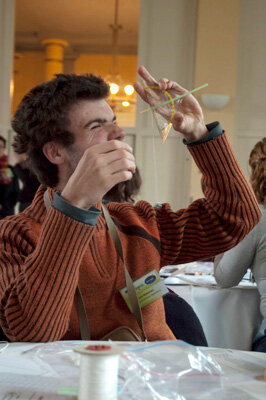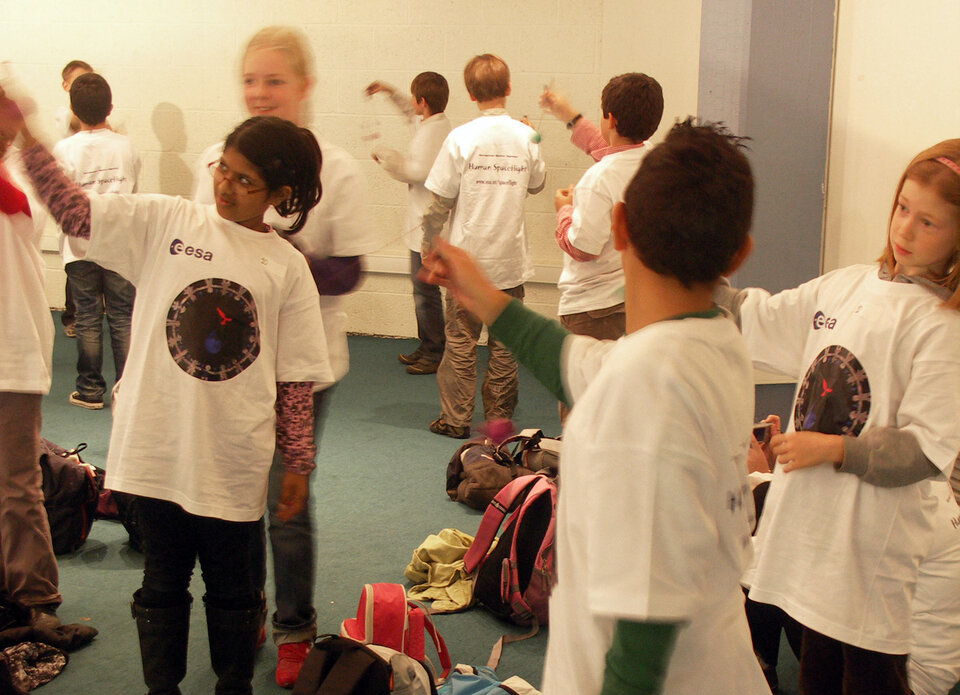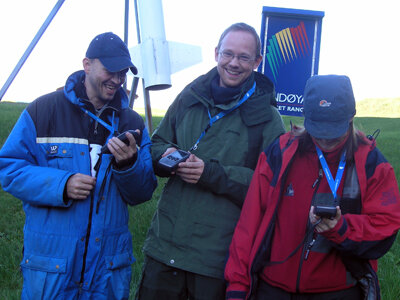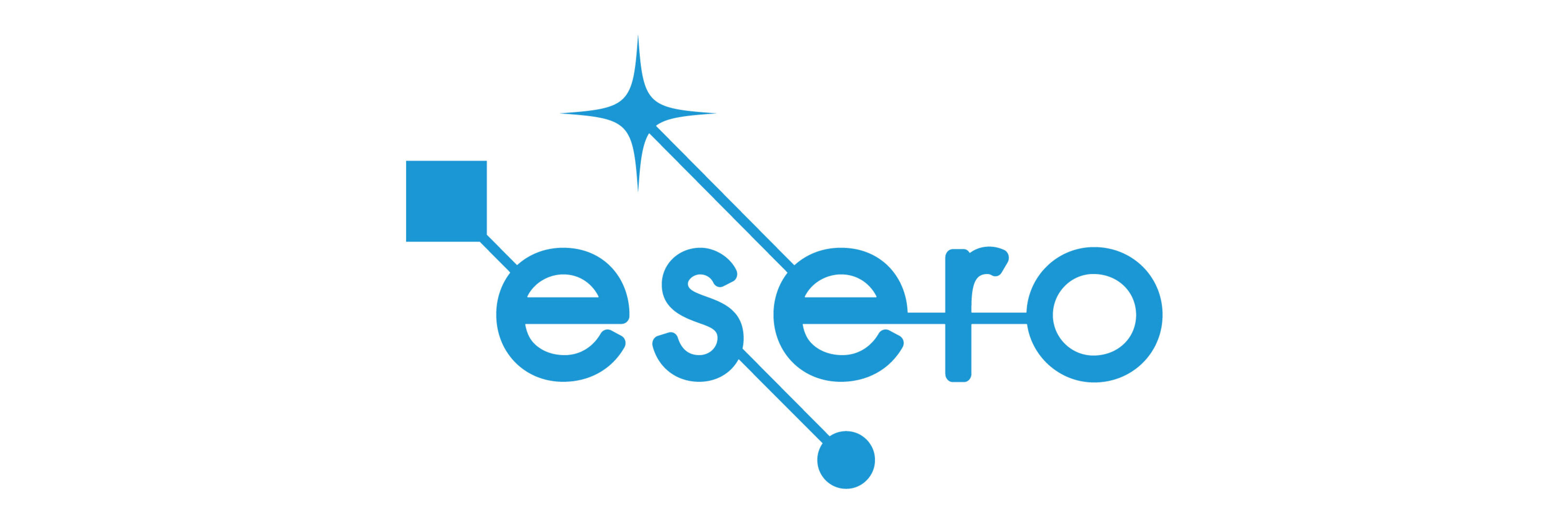Resource Offices promote space education in schools
There are currently five European Space Education Resource Offices (ESEROs) in ESA Member States, each created to promote science, technology and space in schools. As the first of these centres enters its fifth year, what has been achieved, and what lessons have been learned?
The first ESERO was opened at NEMO, the National Science and Technology Centre in Amsterdam, in April 2006. This was followed by the establishment of ESEROs in Belgium (2006), the United Kingdom and Norway (2008), and Ireland (2009).
The managers of these five offices recently shared their experiences during a workshop in Noordwijk, the Netherlands, where they described their activities, the progress that has been made and their plans for the future. One of the key objectives of the meeting was to reach out to an audience that included representatives of educational organisations from the other ESA Member States, so that they could learn about, and evaluate, the ESERO initiative.
Rather than being an isolated ‘island’ disconnected from the educational community, each ESERO is linked with national stakeholders in the fields of science, education and space. This means that, in addition to their own outreach work, the ESEROs act as partners on activities with other organisations, building on this synergy and maximising the effects of their outreach effort.
Supporting teachers

All of the ESEROs consider teacher training to be a key element of their work. For example, over 900 teachers attended workshops organised by the Dutch ESERO in 2009, while more than 1,000 teachers have been in contact with the Belgian ESERO, and 650 have participated in special teacher training days.
By showing teachers how they can use space activities, such as earth observation, in their curriculum, the ESEROs indirectly reach out to many more pupils than would be possible through occasional visits to schools. The ESEROs also receive feedback from the teachers about their needs and restrictions in the classroom, so that the next training sessions can be fine-tuned and match the teachers’ daily work even better.
Outreach to teachers has also been achieved through education fairs, exhibitions and conferences, e.g. a conference for secondary school teachers on the UN and space organised by the United Nations Association, Flanders, Belgium, where educational material from ESA and the Belgian ESERO was presented.
In addition, a wide selection of educational resource materials has been developed or made available, both online and in hard copy, through the ESERO project. Both the Dutch and Belgian offices have produced educational resource materials that are invaluable guides for teachers and full of inspirational ideas for use in classrooms. More materials are in the pipeline.
The Netherlands

One recent example is the Reis door de ruimte (Travel through space in 80 lessons), a source book for Dutch teachers that was developed by ESA’s Education Office and the Dutch ESERO, with inputs from science teachers, schools inspectors, curriculum designers and other educational experts. Through a collaboration with the Dutch Ministry of Education, Culture and Science, the book has been sent, free of charge, to 3,500 schools in the Netherlands.
The Dutch ESERO and its partner, VTB, have organised workshops to ensure that teachers are familiar with the material and have the confidence to use it in the classroom. The Reis door de ruimte material has also been used in Belgian workshops attended by student teachers and professors from teacher-training institutions. The ESERO in Brussels intends to broaden the target group to include primary school teachers and pre-school teachers in the coming months.
In 2009, the Dutch ESERO also produced a series of lessons about the Moon, as well as a digital presentation about our closest celestial neighbour for use in the classroom. As part of the Mission Moon project, volunteers from observatories were available to visit schools, give a presentation and enable pupils observe the Moon through a telescope. The project was a great success, with more than 150 schools taking part.
Belgium

The linguistic and cultural divide in Belgium presents its own challenges, so the Belgian ESERO has two managers, one to meet the needs of the Dutch-speaking community and the other to cater for the French and German-speaking communities. Various outreach initiatives have been undertaken to meet the needs of each group.
A series of booklets for young students in the French-speaking community was produced to coincide with the 6 month mission to the International Space Station (ISS) by ESA’s Belgian astronaut, Frank De Winne. These Space Mission booklets will be distributed to all French-speaking primary schools and it is hoped to develop a Dutch version very soon.
A further tie-in to De Winne’s mission took place in October 2009, when 35 primary school teachers and 300 students from schools in the three different language communities were selected to attend a special ISS Day in Brussels.
Norway

The Norwegian ESERO, which has been running for a little over one year, is a relative newcomer. Co-located with the Norwegian Centre for Space-related Education (NAROM) at Andøya Rocket Range, its main activity to date has been to run web- and field-based courses for teachers. These have a strong focus on practical, space-related classroom activities, involving the use of satellite images, GPS, GIS and polar research. Many of the activities are linked to Sarepta, an online resource for schools provided by NAROM and the Norwegian Space Centre.
The Norwegian office also organises three-day-long field courses which involve hands-on activities and lectures. In order to encourage local networks of teachers and to minimise travel time and expenses, these courses are located in different parts of the country.
More countries join

The British and Irish ESEROs, located at the National Science Learning Centre in York and the FORFAS – Discover Science and Engineering centre in Dublin respectively, have joined the ESERO project quite recently and they are now preparing to promote space and science in the schools of their countries.
Background
The ESERO programme recognises that space captures the imaginations of young people and offers a way to focus their enthusiasm and increase their interest in Science, Technology, Engineering and Maths (STEM) subjects. The overall objectives of the programme are to increase the numbers of students studying the physical sciences at school and university, to promote a positive attitude to careers in STEM subjects, and to foster a greater understanding of science and its value to society.
Each of the ESERO contact points is led by local education experts who are an integral part of the national educational system and networks. ESA’s role is to fund and supervise the ESERO offices and their activities, and to offer - in close partnership with the local educational bodies - support, expertise and space-related resources tailored to the specific needs of the national education communities.




